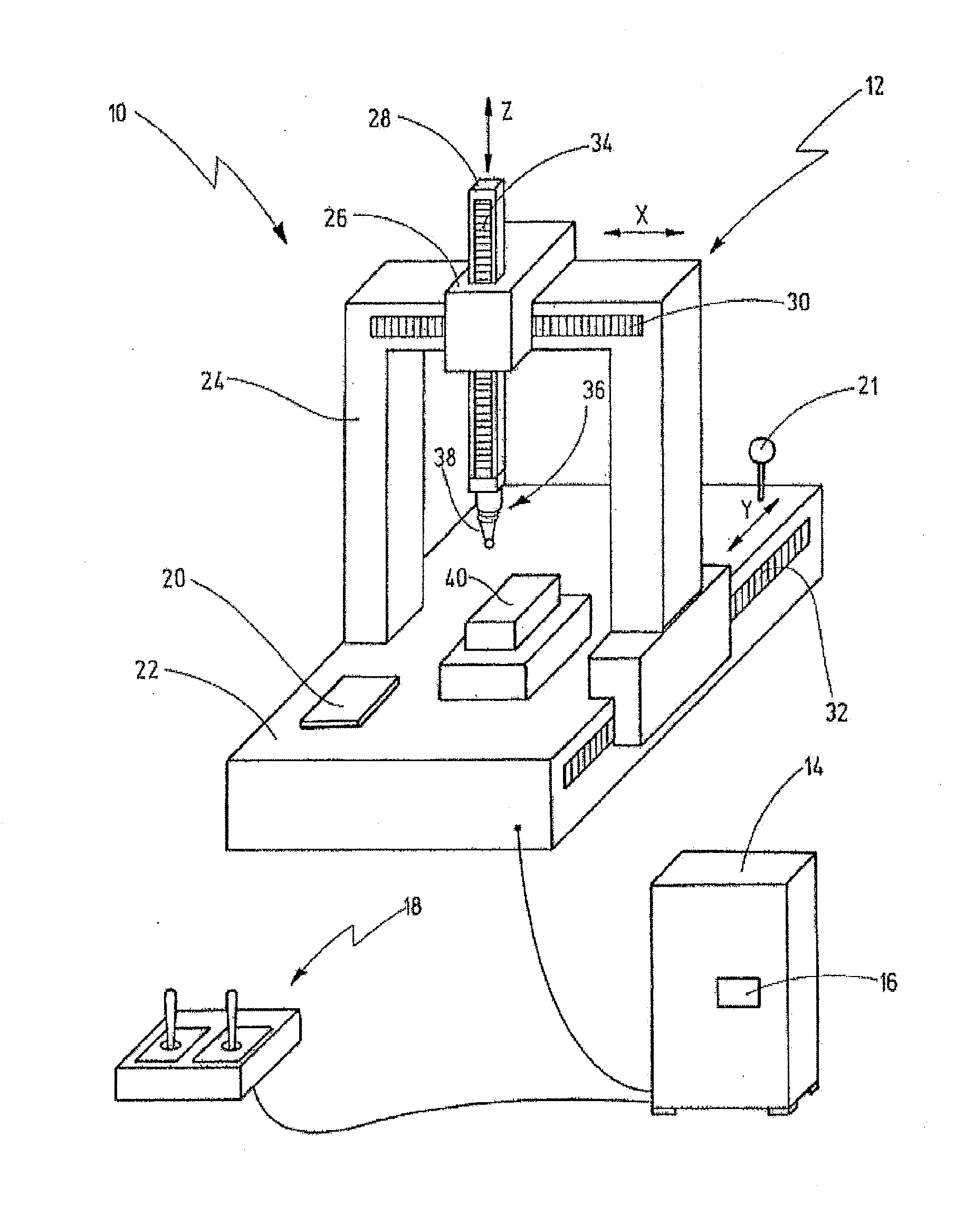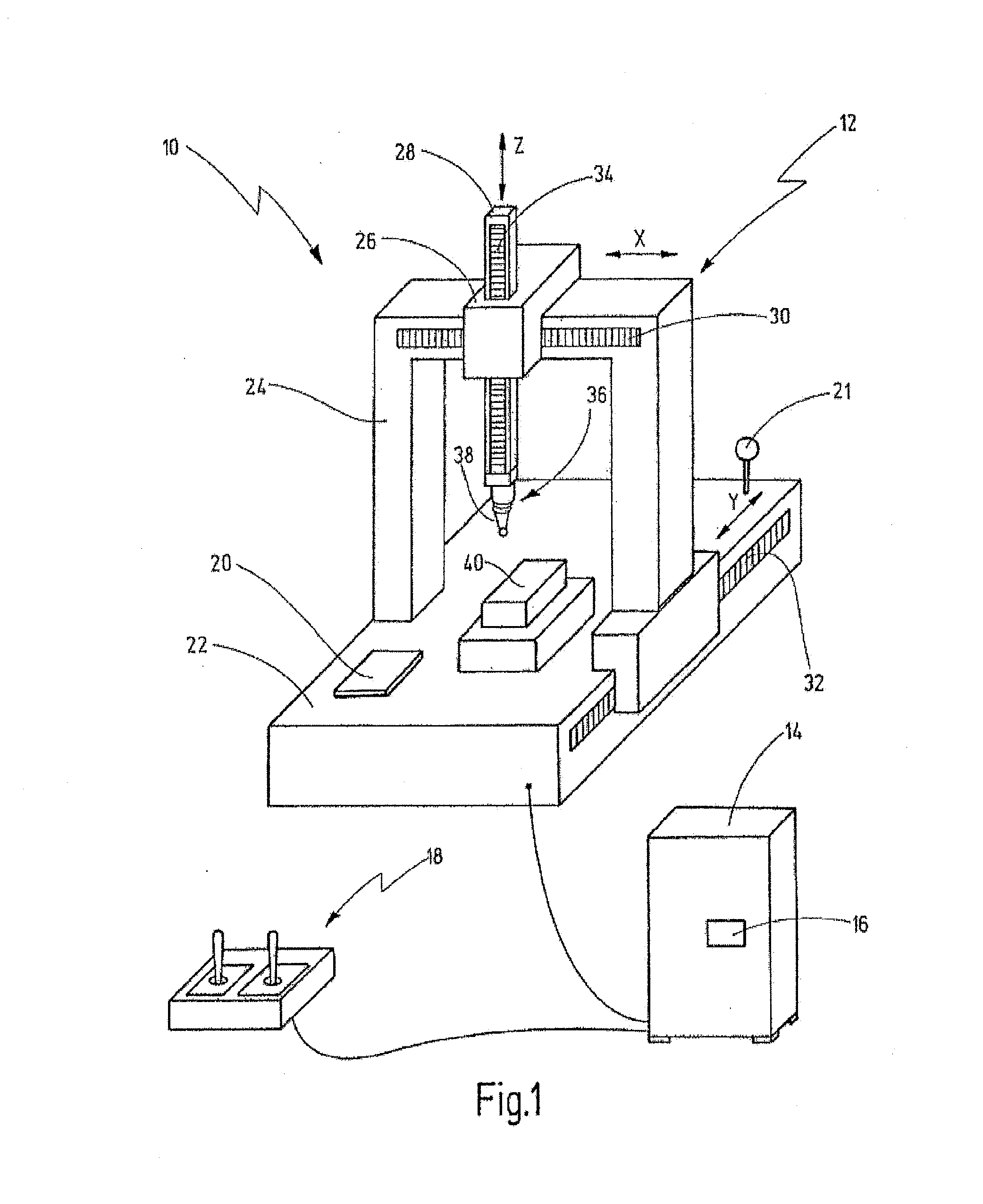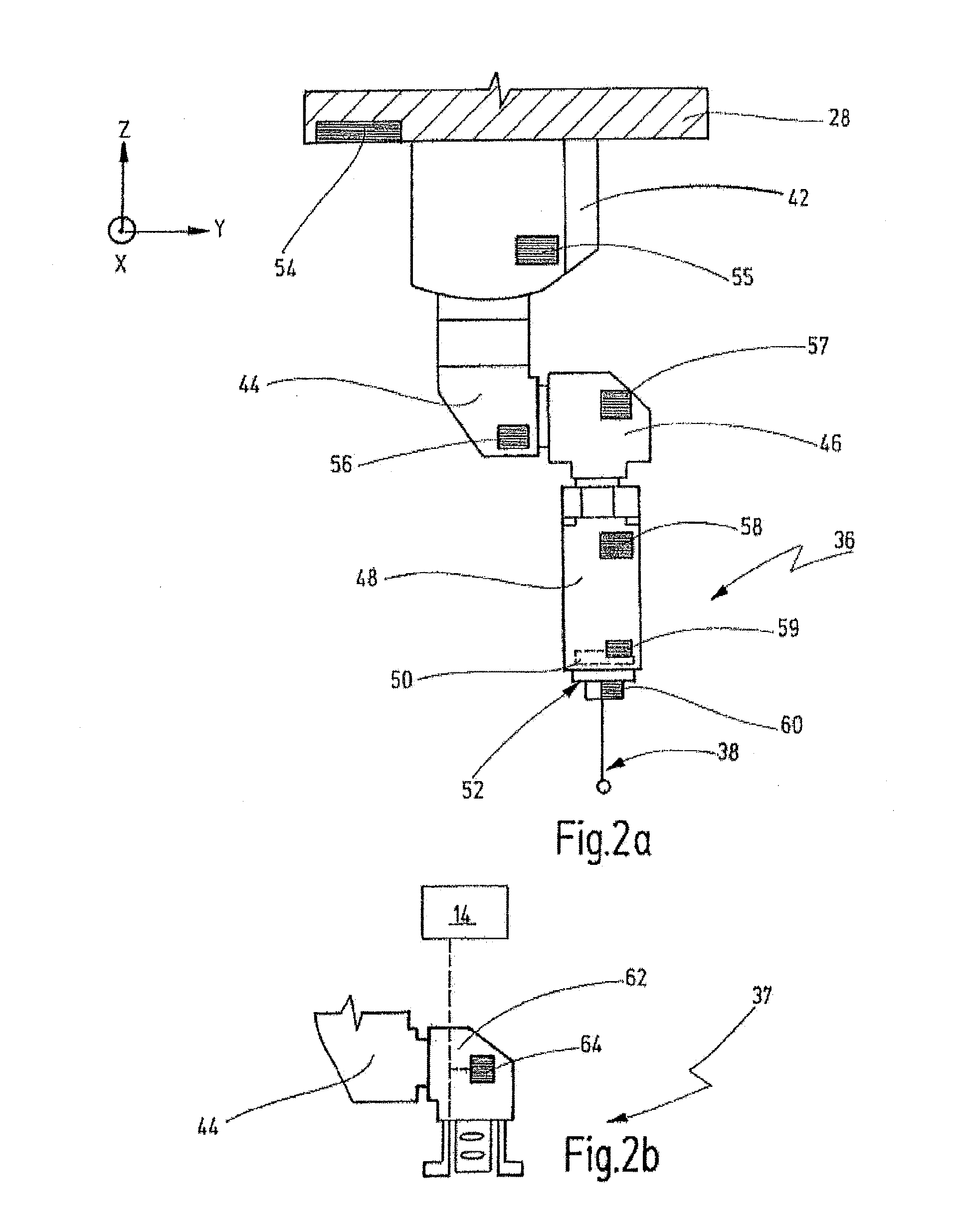[0033]To detect collisions, it is possible to use all accelerations that are greater than the maximum machine acceleration. If, in addition, the measurement unit is further supplied with information as to which acceleration is currently being conducted, the coordinate measuring machine can detect a deviation in direction and / or amplitude as a possible collision, and thus immediately bring the machine into a safe state, for example effect free-running of the appropriate axis, or stop the movement of the coordinate measuring machine.
[0035]Thus, the signals detected by means of the position change sensors can be used in order to determine the instantaneous position and orientation of the sensor, to monitor the drive behavior of the coordinate measuring machine with reference to the acceleration and / or speed actually active at the sensor, and to monitor discontinuities in the drive behavior, for example jerking, slipping or frequency excitations. In particular, it is thus rendered possible to optimize the drive behavior of the entire coordinate measuring machine in a self-learning fashion so as to arrive at an optimum measurement performance with reference to accuracy and / or speed. Since actual accelerations at the sensor are known, it is possible to dispense with a complicated development of
model parameters for the coordinate measuring machine. In addition, the coordinate measuring machine can optimize itself with the aid of the actual acceleration data. Furthermore, it is thus also possible to avoid problems in the modeling such as, for example, a manufacturing tolerance, where prescribed fixed parameter sets do not lead to satisfactory results.
[0042]In this way, it is possible for the movement profile of the coordinate measuring machine actually to be determined during the recording of measurement data by means of an optical sensor, for example during an
exposure time of the optical sensor. Typical
exposure times lie in the range from 10 to 20 ms for normal frame rates of 50 Hz. This corresponds to only individual or a few
system clocks. The recorded image is smeared by the movement during the
image recording and appears unsharp. This effect can now be corrected subsequently, since it is possible to directly determine the actual movement path of the sensor, at least its relative path between the start and end of the
exposure time. It is obvious that the computational correction can be performed more effectively, the more accurately it is possible to determine the data of the movement path. The direct detection of the change in position is much superior in this case to the determination of position change data by differentiation of the position data.
[0054]For application in coordinate measuring machines having tactile sensors, it is helpful, for example, when the mutually displaceable parts in a probe head, for example the housing and the feeler holder, are separately equipped with position change sensors in each case. It is thereby possible to detect touching earlier from the difference between the corresponding measurement signals of the first and second sensors. It is particularly advantageous that the measurement rate of the position change sensors can be performed independently and therefore at a higher frequency than the measurement of the position of the coordinate measuring machine from which differentiated previously acceleration data were obtained.
[0056]It can be provided to check an acceleration measurement at regular intervals, in particular at a multiple of the
system clock. This can be performed by updating the acceleration and integrating it to the appropriate speed, and further integrating it to the appropriate position. The position data thus obtained can then, for example, be compared with the data of the position sensors of the coordinate measuring machine that directly determine the position of the sensor in three spatial directions. It is thereby possible to prevent the measurements from drifting apart and to achieve more stable data as well as a reliable measurement.
[0057]It can then be provided in the case of the method for
collision detection of a coordinate measuring machine that the desired value is a maximum value fixed for the coordinate measuring machine, and that the putting-into-a-safe-state is performed if the at least one change in position is greater than the maximum value. Alternatively, the maximum value can also be updated dynamically by a
control unit of the coordinate measuring machine, for example as it occurs in the desired movement path. It is possible to provide a
safety margin in order to avoid erroneous estimates.
 Login to View More
Login to View More  Login to View More
Login to View More 


